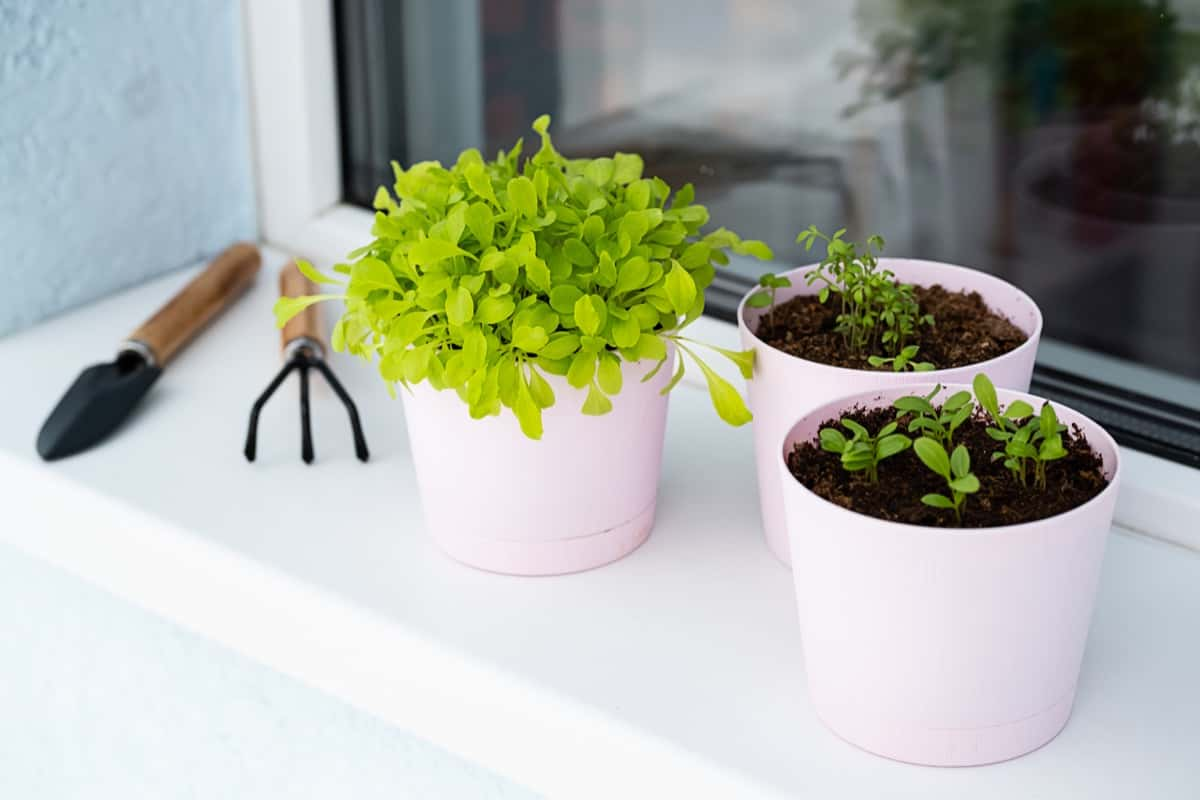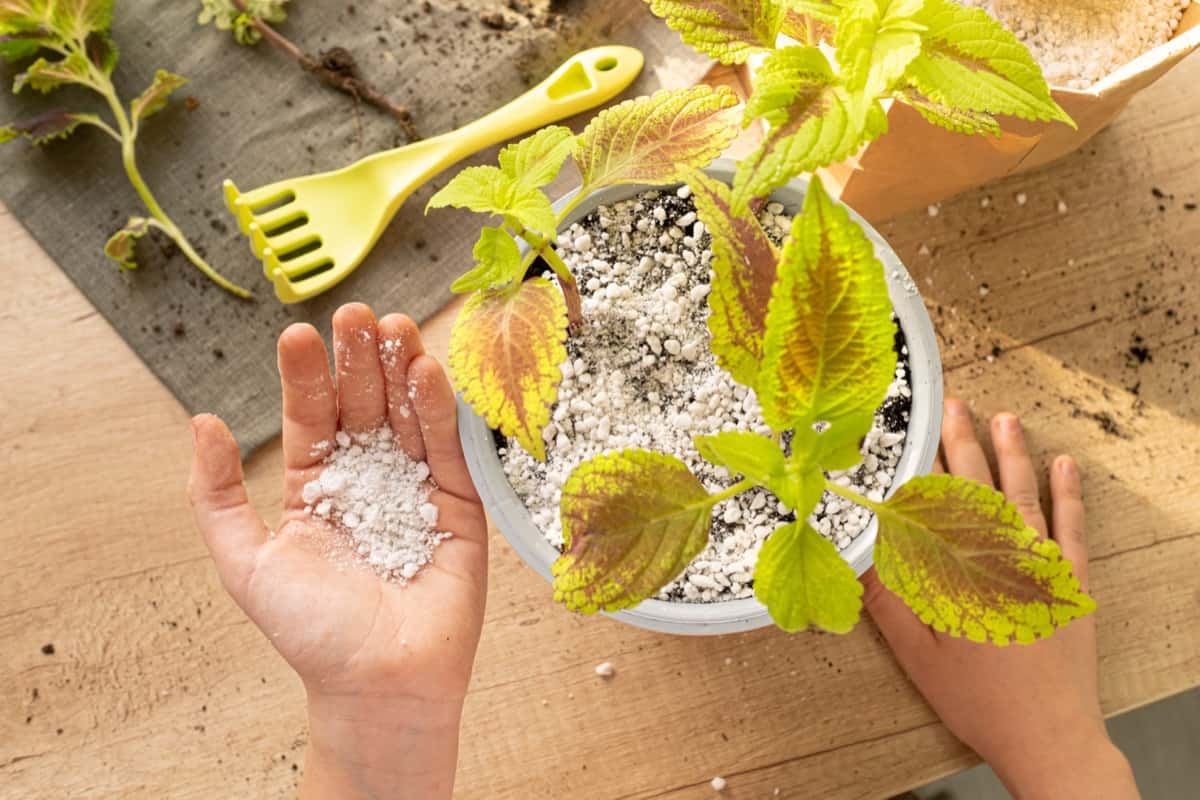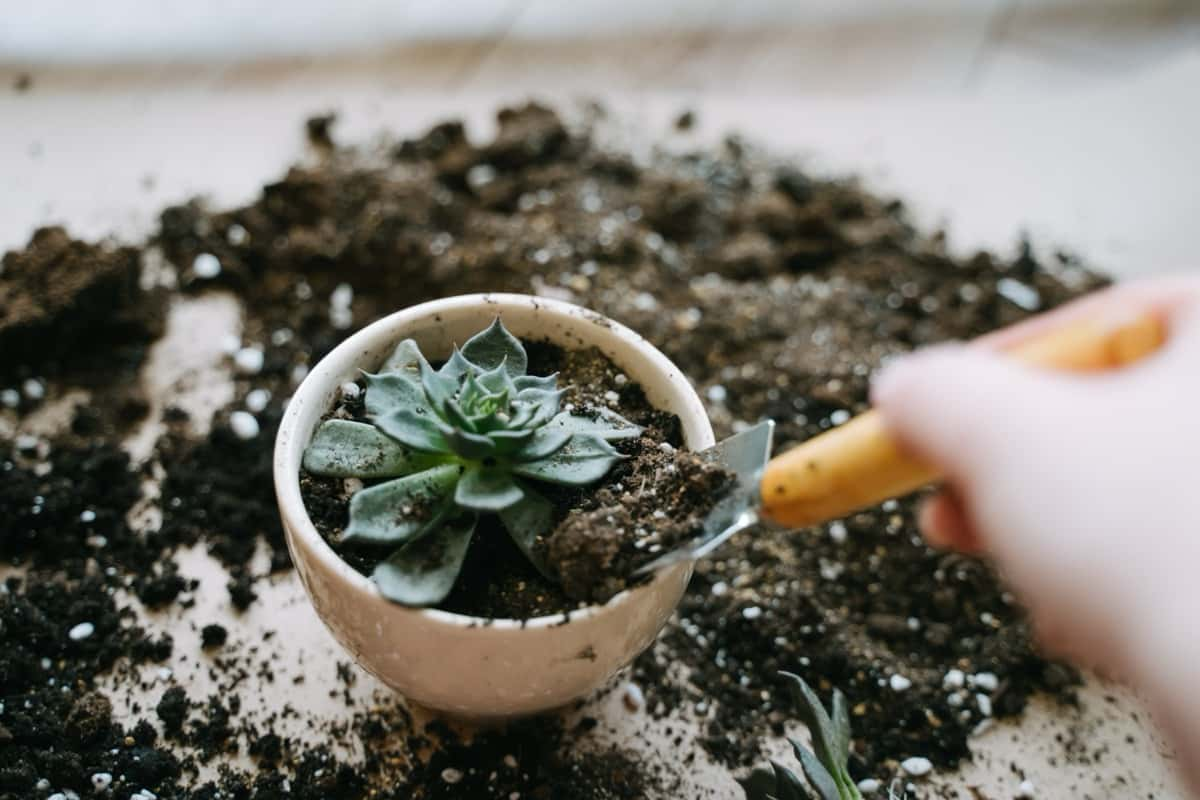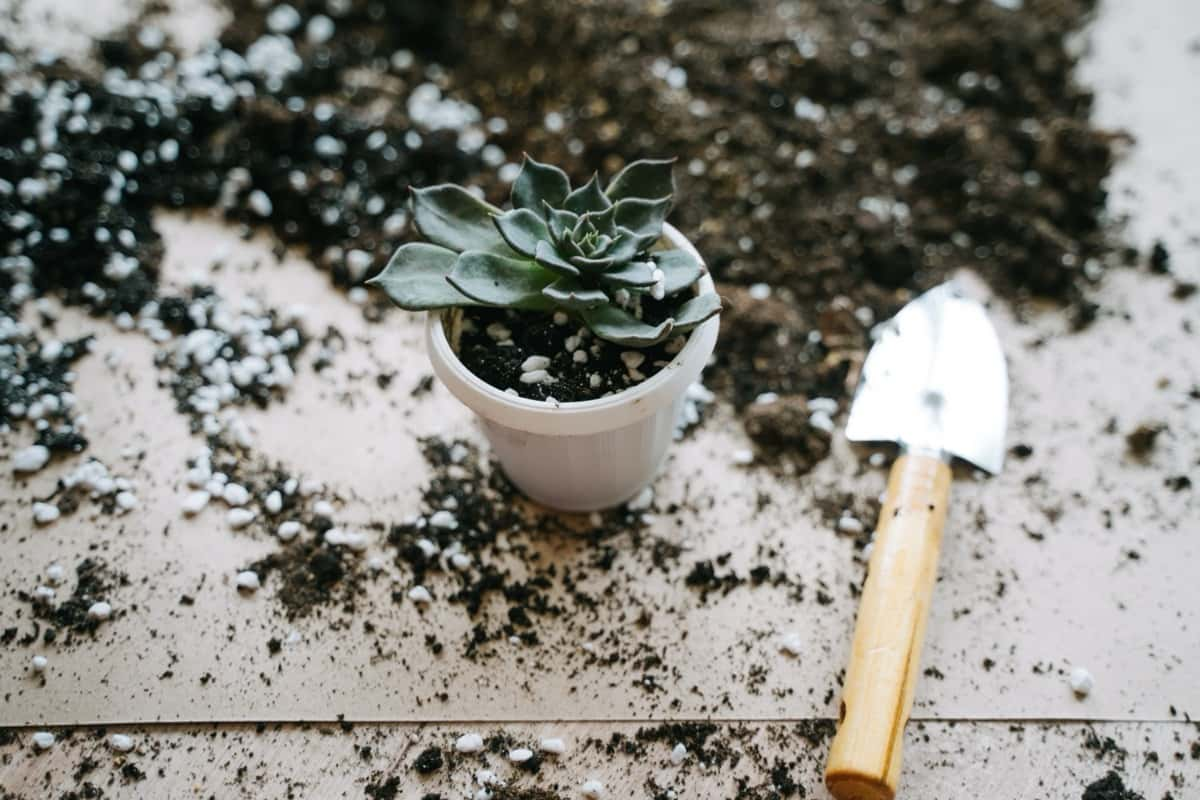Epsom salt, also called magnesium sulfate, is a versatile mineral compound that has gained popularity among plant enthusiasts for its numerous benefits. This salt contains magnesium and sulfur – two essential nutrients for plants’ growth and development.

Using Epsom Salt for Potted Plants
Benefits of Epsom Salt for Potted Plants
When it comes to the Benefits of Epsom salt for indoor gardening, Epsom salt promotes nutrient absorption. It helps optimize soil pH levels and improves the uptake of important minerals like nitrogen, phosphorus, and potassium (NPK). This means your potted plants will receive a well-rounded nutritional boost. Epsom salt can also aid in seed germination and root development. When used as a soak or added to potting mixtures at planting time, it provides young seedlings with an extra dose of nutrients that encourage robust growth from the start.
Assessing Your Plants’ Needs
Signs Your Potted Plants May Benefit from Epsom Salt
One of the key benefits of using Epsom salt on indoor plants is its ability to enhance nutrient absorption. Potted plants can sometimes show signs of nutrient deficiencies, which can hinder their growth and overall health. Signs that your potted plants may benefit from Epsom salt include yellowing leaves, stunted growth, or poor flowering. These symptoms often indicate a lack of essential nutrients like magnesium and sulfur. By incorporating Epsom salt into your plant care routine, you can help address these deficiencies.
Understanding Plant Nutrient Requirements
Understanding the nutrient requirements of your potted plants is crucial for their well-being. Magnesium helps in chlorophyll production, which is necessary for photosynthesis. Sulfur aids in the synthesis of important proteins and enzymes within the plant’s cells.
By providing your potted plants with an adequate supply of magnesium and sulfur using Epsom salt, you can ensure they have what they need to thrive. It’s important to note that while some fertilizers contain these nutrients, they are not always readily available for absorption by the roots. Incorporating Epsom salt into your plant care routine helps promote healthy foliage development and vibrant blooms.
Preparing Epsom Salt Solution for Potted Plants
Dilution Ratios for Epsom Salt Solutions
Preparing Epsom Salt Solution for Potted Plants can be a simple and effective way to provide your plants with the necessary nutrients. How to apply Epsom salt to indoor potted plants? The general rule of thumb is to use one tablespoon of Epsom salt per gallon of water. This ratio provides a balanced amount of magnesium and sulfur without overwhelming your plants. However, it’s always a good idea to check the specific needs of your plant species, as some may require Epsom salt.
In case you missed it: Heat-Tolerant Outdoor Plants for Home Yards, Terrace, Balcony, and Containers

Mixing and Storage Tips
When Mixing Epsom salt for houseplants, make sure to dissolve the Epsom salt completely in warm water before applying it to your potted plants. This ensures that all nutrients are evenly distributed throughout the solution. Stir well until there are no visible crystals left. As for storage tips, it’s best to mix up fresh batches of Epsom salt solution each time you plan on using it. Storing pre-mixed solutions can lead to bacterial growth or nutrient breakdown over time. So, save yourself from potential problems by making small amounts as needed.
Application Methods
Foliar Spray Application
When it comes to Epsom salt foliar spray for potted plants, it involves spraying a diluted Epsom salt solution directly onto the leaves of your plants. Epsom salt watering solution for container plants allows for quick absorption of magnesium and sulfur through the foliage, providing immediate benefits to the plant. It is particularly effective in correcting nutrient deficiencies or helping plants recover from stress.
Direct Soil Application
Direct soil application involves adding Epsom salt directly to the soil around your potted plants. This allows for the gradual release of nutrients into the root zone over time, promoting overall plant health and growth. It is especially beneficial for improving soil quality and enhancing nutrient uptake by roots. For direct soil application, sprinkle about one teaspoon of Epsom salt around each plant’s base and gently work it into the top layer of soil.
Scheduling Epsom Salt Applications
Frequency of Application for Potted Plants
When it comes to the Epsom salt application schedule for container plants, timing is key. You want to make sure you’re giving them the right amount at the right time. Consider the type of plant you have. For instance, flowering plants and vegetables often benefit from regular doses of magnesium and sulfur provided by Epsom salt. Take into account the season. Different seasons bring different needs for your plants. During the growing season, you may increase the frequency of your Epsom salt applications.
Seasonal Considerations
During dormant periods or winter months when growth slows down significantly, reducing or even suspending Epsom salt applications might be necessary. Always monitor your plants’ health and nutrient requirements closely. Keep an eye out for any signs of deficiency or excess that may indicate a need for adjustment in your scheduling. By understanding these considerations and adjusting accordingly throughout the year, you can ensure that your potted plants receive optimal benefits from their Epsom salt treatments without overdoing it.
Epsom Salt for Specific Plant Types
Succulents and Cacti
Succulents and cacti are trendy, low-maintenance plants that can add beauty to any space. When it comes to succulents and cacti, one common issue is root rot. Epsom salt can help prevent this by promoting better drainage in the soil. To use Epsom salt for succulents and cacti, simply dissolve half a teaspoon in one gallon of water and use it as a regular watering solution.
Flowering Plants and Vegetables
Flowering plants like Roses, Geraniums, and Petunias also thrive with the help of Epsom salt. The magnesium sulfate found in Epsom salt promotes vibrant blooms by aiding in chlorophyll production. For Epsom salt for flowering container plants, you can apply an Epsom salt solution directly to the soil or as a foliar spray every two weeks during the growing season.
In case you missed it: Calandiva Plant Care: Pruning, Propagation, and Indoor Care

Vegetables are another plant type that greatly benefits from Epsom salt. Tomatoes, peppers, and leafy greens like spinach all require adequate levels of magnesium for healthy growth. By adding diluted Epsom salt to their watering routine or applying it directly to the soil around their roots, you’ll provide them with this essential nutrient.
Troubleshooting Common Issues
Avoiding Overuse of Epsom Salt
When using Epsom salt for potted plants, more is not always better. While this natural mineral can provide numerous benefits, overusing it can harm your plants. It’s important to understand the appropriate Epsom salt dosage for houseplants and the frequency of application to avoid any negative effects.
Identifying Symptoms of Magnesium or Sulfur Deficiency
One of the main reasons gardeners turn to Epsom salt is its ability to correct nutrient deficiencies in plants. Magnesium and sulfur are essential nutrients that play a crucial role in plant health. If your potted plants are lacking these nutrients, they may exhibit certain symptoms that indicate a deficiency.
Magnesium deficiency in potted plants often manifests as yellowing leaves with green veins, while sulfur deficiency may cause stunted growth and pale foliage. By observing these signs, you can identify whether your plants could benefit from an Epsom salt treatment. To prevent the overuse of Epsom salt, it’s important to accurately diagnose nutrient deficiencies before applying any treatments.
Integrating Epsom Salt into Regular Plant Care
Complementing Fertilization Routines
Integrating Epsom Salt into regular plant care is a great way to complement your fertilization routines and enhance soil amendment practices. You can use Epsom Salt as a supplement alongside traditional fertilizers. Its high magnesium content helps improve chlorophyll production, leading to vibrant and lush foliage. During the growing season, simply dissolve a tablespoon of Epsom Salt in water and apply it to the soil around your plants every four weeks.
Soil Amendment Practices
In addition to its role in fertilization, Epsom Salt can also serve as an effective soil amendment. It helps loosen compacted soils, allowing better root penetration and nutrient absorption. When it comes to Epsom salt soil amendment for potted plants, before planting new potted plants or transplanting existing ones, mix some Epsom Salt into the potting mix or sprinkle it on top of the soil.
Epsom Salt and Pest Management
Using Epsom Salt as a Pest Deterrent
Using Epsom salt as a pest deterrent is an effective and natural method that many gardeners swear by. The high magnesium content in Epsom salt acts as a repellent for various insects, including aphids, mites, and even slugs. By sprinkling or spraying a diluted solution of Epsom salt on your potted plants, you create an environment that pests find unfavorable.
Safe Practices for Potted Plants
However, it’s important to follow safe practices when using Epsom salt for pest management in potted plants. Always dilute the Epsom salt solution according to the recommended ratios. Applying undiluted or excessive amounts of Epsom salt can cause harm to your plants rather than benefit them.
Make sure to apply the solution evenly on both sides of the leaves and around the base of the plant where pests are most likely to attack. This will create a protective barrier against unwanted critters without harming beneficial insects like bees or ladybugs. Remember that while using Epsom salt may deter some pests, it might not eliminate all infestations. In severe cases, additional methods like organic insecticides or physical removal may be necessary.
In case you missed it: How to Make Grass Clippings Compost Fertilizer: Homemade Recipe, DIY for Container, Indoor, and Backyard Garden Plants

Conclusion
Epsom salt can be a popular addition to your potted plant care routine. Its benefits range from promoting healthy growth and vibrant blooms to preventing nutrient deficiencies and pest infestations. By understanding the signs of magnesium or sulfur deficiency in your plants and knowing how to prepare and apply Epsom salt solutions properly, you can ensure that your potted plants get the right amount of these essential nutrients.
- How to Grow Hibiscus from Flower
- Plantation Ideas for Home Decoration: A Beginners Guide
- Flower Garden Designs and Layouts for Beginners
- Planting and Spacing Techniques in Papaya: A Beginner’s Guide
- Growing Gold: Essential Techniques for Planting Pineapples
- How to Make Kalanchoe Plant Bushy: Home Remedies and Solutions
- 11 Reasons Why Your Gardenia is Not Blooming: Home Remedies and Solutions
- Eco Elegance: The Guide to Designing a Drought-Tolerant Landscape
- Gardening on a Slope: Strategies for Hillside Landscaping